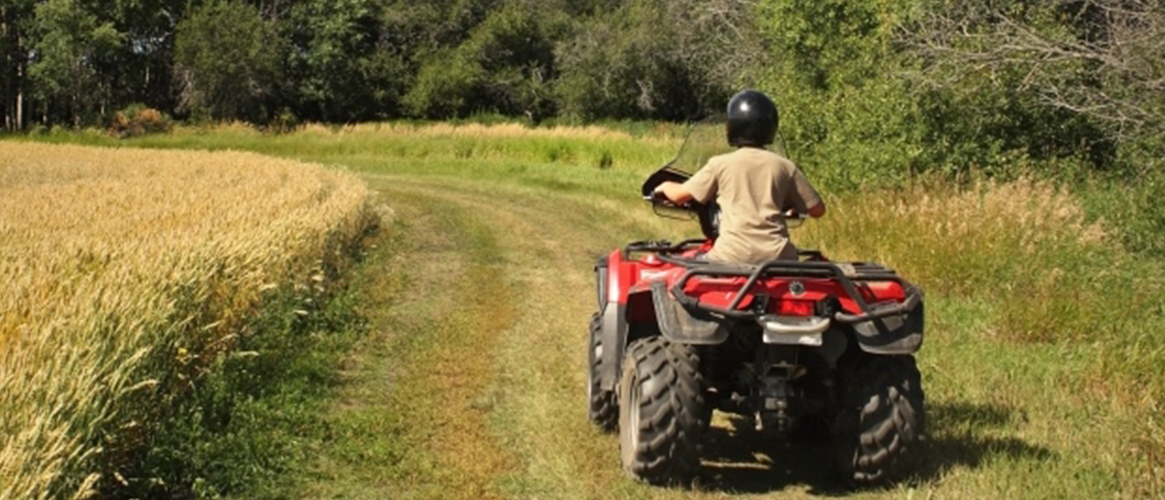The all-terrain vehicle—or ATV—is a modern day mule. Not only does it help you get from point A to point B, but as the name indicates, it can traverse the difficult and ever-changing ground conditions found at just about any agricultural operation. Unlike the mule though, the ATV isn’t stubborn when it comes to being pushed to its limits—and therein lies a serious injury risk.
With a higher center of gravity than other motorized vehicles, ATVs are already at greater risk of rollover. Driving too fast on rough terrain, pulling loads that exceed weight limits, or trying to climb steep hills only increase the chance an ATV will roll over, eject the driver, and possibly land on top of the driver.
Understanding the limits of an ATV and respecting those limits are two critical steps to ensuring a safe workplace at your farm.
What your employees need to know about using an ATV on the farm
Let’s face it, ATVs are fun. Both recreational and occupational use has exploded since the introduction of the ATV several decades ago. But it’s important to treat the agricultural version of the ATV like the tool it is.
The ag ATV is heavier and specifically designed to haul equipment and farm products. The Occupational Safety and Health Administration (OSHA) recommends they be equipped with motorcycle handlebars for the best steering and have large, low pressure tires.
And no one should use an ATV without the proper training. Driver inexperience is one of the more common reasons behind ATV accidents. It’s not uncommon on a family owned farm for those younger than 16 years of age to operate an ATV, so the inexperience factor is an important one to remember.
What your employees need to do to use an ATV safely
Since ATVs are not equipped with seat belts, it’s up to the driver to use it safely to prevent an accident. This includes being on the lookout for any hazard such as a tree, rock, rut, stream, or gully. It also includes driving at safe speeds, staying off paved roads, and not operating the vehicle under the influence of alcohol or drugs.
Other important safety steps to follow include:
- Use personal protective equipment (PPE)—this includes a motorcycle helmet, eye protection, gloves, work boots, and long pants.
- Conduct a pre-ride inspection of tires, brakes, headlights, etc., and fix anything that’s broken.
- Never exceed the manufacturer’s specified hauling and towing capacity or weight limits. And make sure to secure and balance cargo.
- Never transport passengers unless the ATV has an extra seat for this purpose.
What to cover at your safety meeting on ATVs
You might want to conduct the meeting out in your fields to give employees an idea or reminder of the type of terrain they are driving over.
Allow ample to time to go over the basics on operating the ATV. Do not let anyone operate an ATV on your farm without hands-on training in the safe handling of the vehicle.
Explain the dangers of excess speed, bumps, pot holes, ditches, and other uneven surfaces while using an ATV on the job.
Also, review your policy on the PPE that you require them to use.
Use the owner’s manual to prep for the meeting. For visuals you can stream a video. Consider quizzing employees about what you covered.
The ATV might not be as stubborn as a good, old-fashioned mule, but it doesn’t know its limits either.
Thankfully, you and your employees do. And when you know those limits, respect the power of the ATV, and follow safety precautions, your farm is a much safer place to work.

